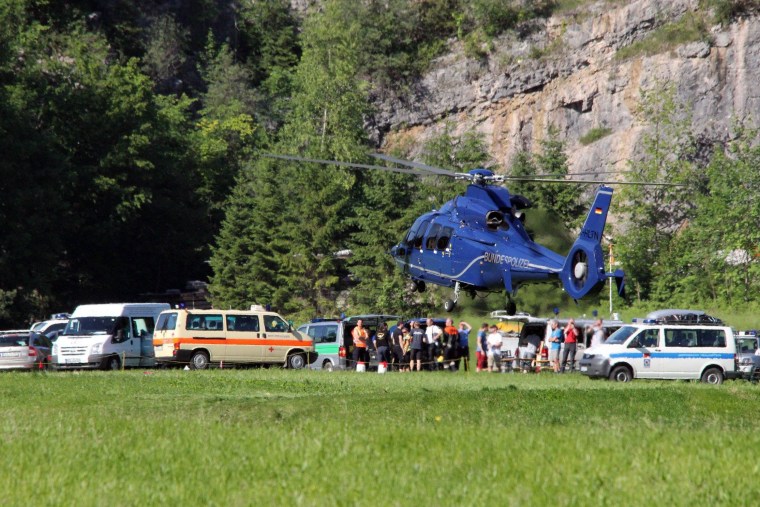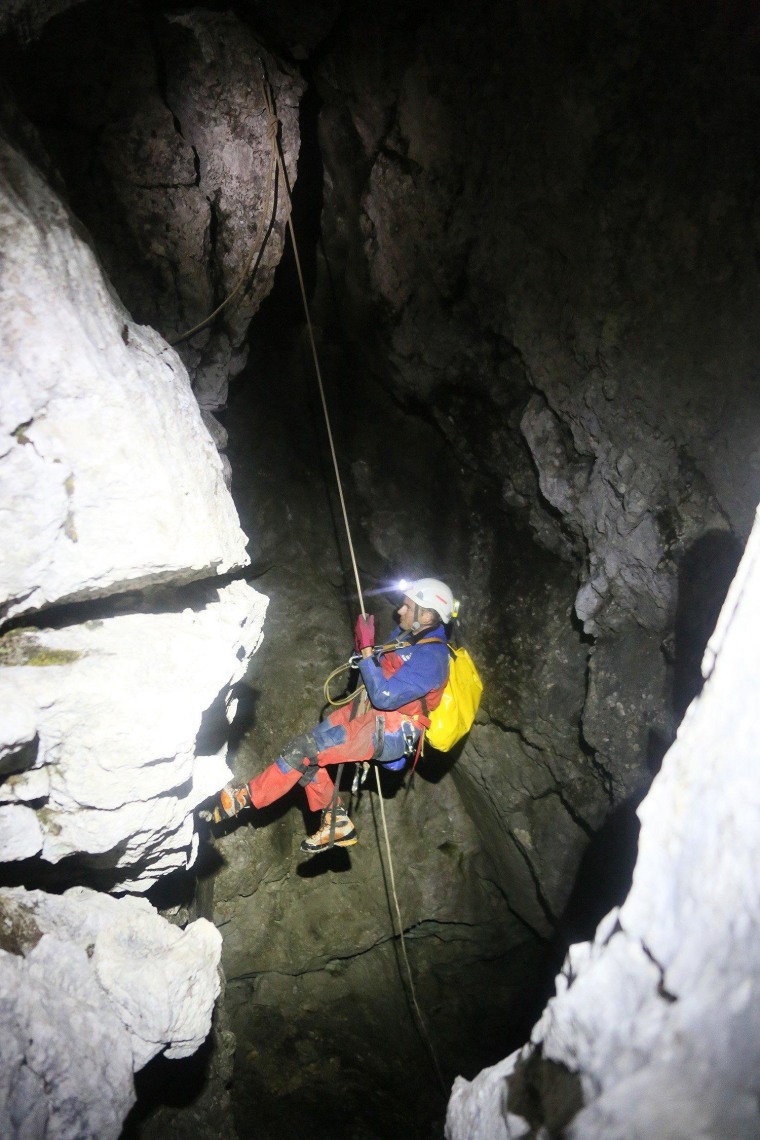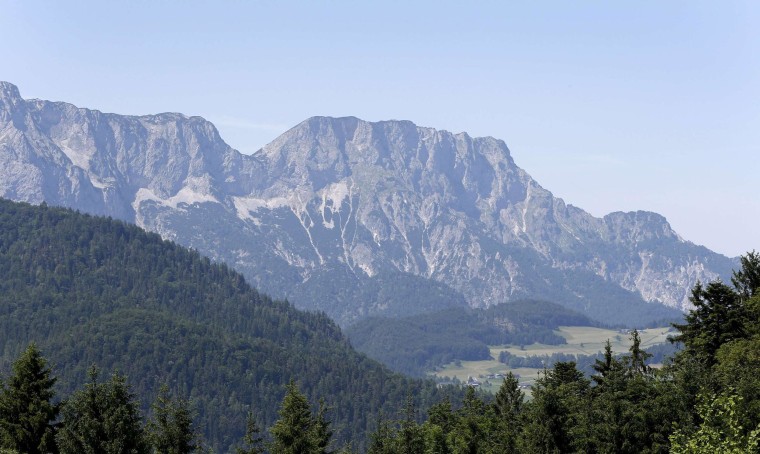BERCHTESGADEN, Germany — With a communication system in place and a doctor on the way, officials said Tuesday that they have made major progress toward rescuing a researcher who was seriously injured more than 3,000 feet inside a deep cave in the German Alps.
The experienced climber, whose name was not released, has been fighting for his life after falling stones hit him on Sunday morning.
The severe head injuries he sustained would be difficult to treat above the surface, but inside the cave, rescue crews face even more difficulties including tight passageways, long vertical drops, and underground waterways. His rescue is still days away and remains risky, officials said.
Stefan Schneider with Bavaria’s mountain rescue team said Tuesday afternoon that the injured researcher was communicating with the rescuers who first reached him Monday, and was able to stand up and make a few steps with the help of others.
“That’s very, very important and positive for us,” Schneider said.

The 52-year-old researcher was severely injured during a cave expedition through the natural shafts and tunnels under the Untersberg mountain in the south-eastern corner of Germany. The cave system was discovered only about a decade ago.
Falling stones hit the researcher in the early morning on Sunday and led to a severe head injury. Because of the remoteness of the accident it took one of his team members 12 hours to climb the 3000 feet to the surface and call for help.
It has turned into a massive rescue operation. Police helicopters are flying back and forth from the mountainside entrance to the cave shuttling rescuers and supplies back and forth.
Officials on Tuesday said they were able to install a text messaging system that worked inside the cave. So instead of a 12-hour climb, information can relayed to the outside world in seconds.
Officials have set up a rescue operations center at the local firehouse, coordinating about 80 rescue team members. More are on their way from neighboring countries, but climbers who can operate under the extreme conditions are rare.
"It’s like trying to find participants for a lunar expedition," Roland Ampenberg, spokesman for Bavaria’s mountain rescue force, said. At a temperature of only about 40 degrees Fahrenheit inside the cave, climbers have to traverse canyons filled with water and rappel down vertical chutes, one of them over 1,000 feet long.
“Everybody’s at their limit,” Ampenberg said.
It’s been especially difficult to find a doctor who could make it down to the injured to assess his condition and prepare him for recovery. One doctor gave up the climb on Sunday because of the difficult conditions, officials said, another entered the cave on Monday.

The second physician was expected to reach the injured during the early morning hours on Tuesday, officials said. Once he has made a full medical assessment of the researcher, a recovery plan will be put in place.
But challenges will still remain. Nils Braeunig, the squad leader at the cave entrance, said it will be a difficult way out as the rescue team brings the injured researcher back to the surface.
Braeunig said the several-mile-long rope system inside the cave would, for example, have to be reconfigured to support the recovery operation.
And the weather above surface could also have an impact: severe rain and thunderstorms, which are projected in the area for the next days, could flood parts of the underground passageways.
"This will be an additional burden,” Braeunig said, “But we know the spots, where water gathers."
